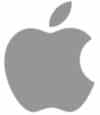
This tutorial describes the different methods that can be used to uninstall apps on a Mac.
Some apps come with an uninstaller, but not all. You can check if the app you want to delete possesses an uninstaller by going to the Application folder and the app's folder. Search for a file named as Uninstall_Appname or Appname_Uninstaller. If found simply double-click on the file to launch the uninstall wizard or else move to the next method. The simplest (clean) method to completely remove a program is to use a dedicated utility such as AppCleaner (free). Drag the app you want to delete in AppCleaner's window. AppCleaner will also locate junk files resulting from the removal of the app.
Alternatives to AppCleaner:
AppZapper (Paid): appzapperom
iTrash (Free): osxbyteom
AppDelete (Paid): reggieashwortom
AppTrap (Free): [ http://onnatiet/apptrap/ onnatiet]
AppBolish (Paid): [ https://www.koingoom/products/maccleanse/ koingoom] Apps downloaded from the Mac AppStore can be uninstalled from the Launchpad. Please read: Mac OS X - How to Use the Launchpad The manual method involves several steps. The first one is to drag the app to the Trash and then empty the latter (Command+Shift+Delete). The next step is to search and remove residual files and folders. Files containing the app preferences are located in the User library > Preferences Folder and end with the .plist extension. Go to: Hard Disk/Users/username/Library/Preferences/. Application support files or folders are usually found in the main library or the user library. Go to Hard Disk/Library/Application Support/ and then to Hard Disk/Users/ username/Library/Application Support / If you have installed extensions or plug-ins for the software, then you should also check for the presence of residual files in the Extensions folder.Go to Hard Disk/Library/ Extensions/ and then to Hard Disk/System/Library/Extensions/ Some software will also install hidden files known as receipts. These files are stored in private/var/db/receipts/. To access to the Receipts folder simply open the Go to Folder menu in the Finder and type: /Private. In the window that opens, navigate to var/db/receipts. There is a small application that can help you find residual files on your Mac, including the hidden ones. This small app is called EasyFind and it is free. There are at least 3 Libraries in Mac OS X or OS X. The main library is at the root of the hard drive: Hard Disk/Library/.
The second one is located in the System folder: Hard Disk/System/Library/.
As for the last one (user library), it is located in the root directory of each user:Hard Disk/Users/username/Library/.
Since Mac OS X 10.7, the personal (user) library is hidden by default. To access it you must expand the Go menu in the Finder, while keeping the Alt key pressed.











